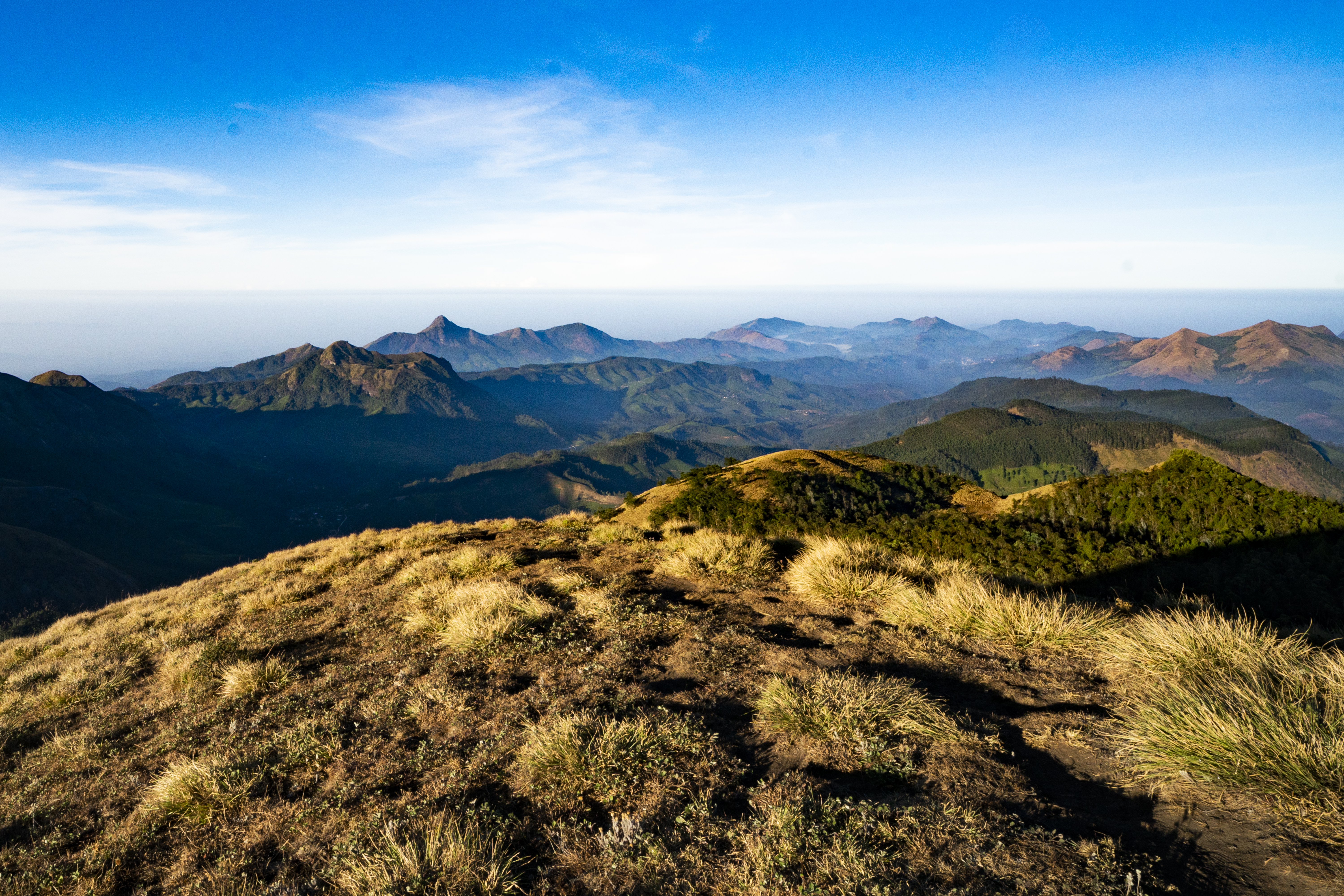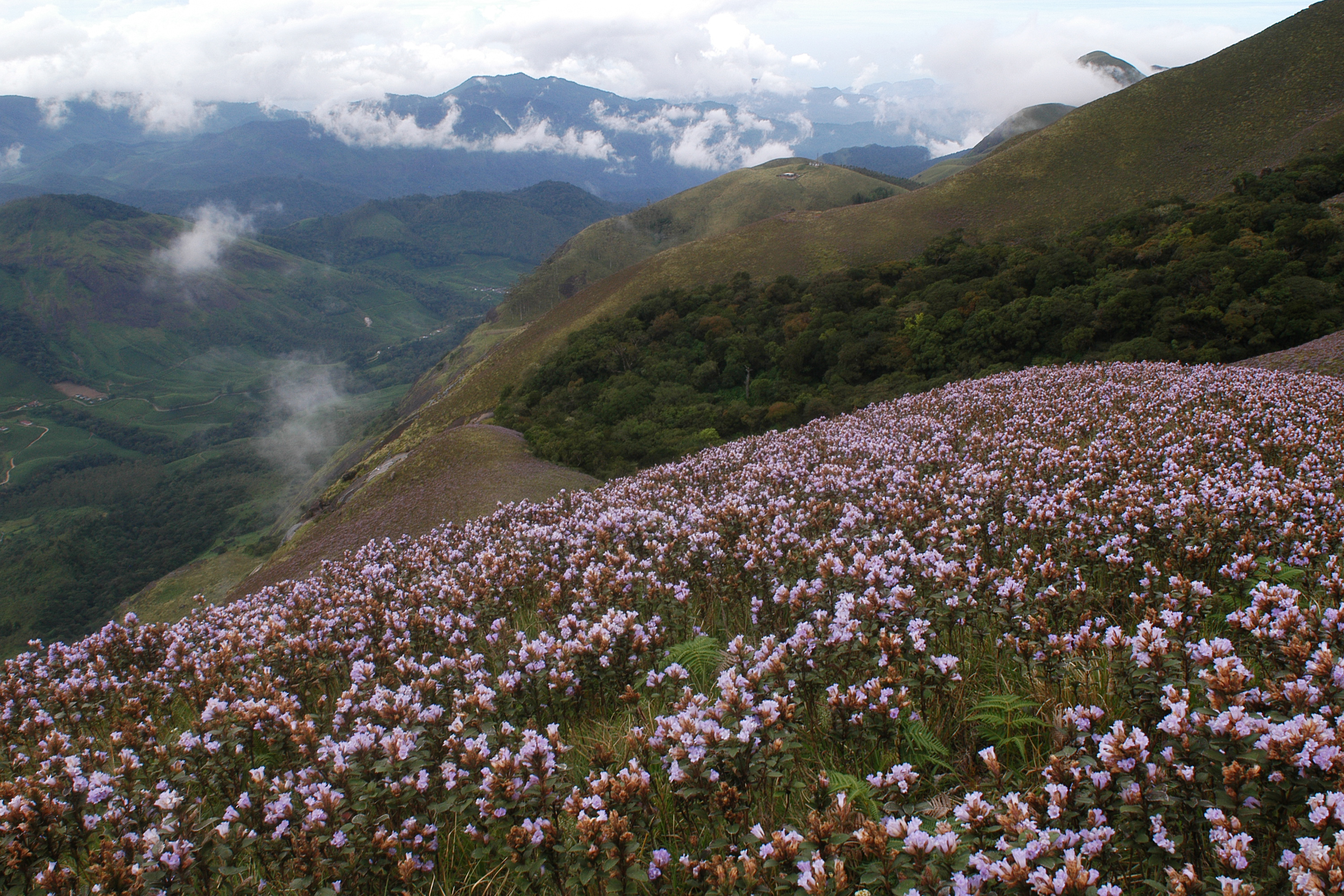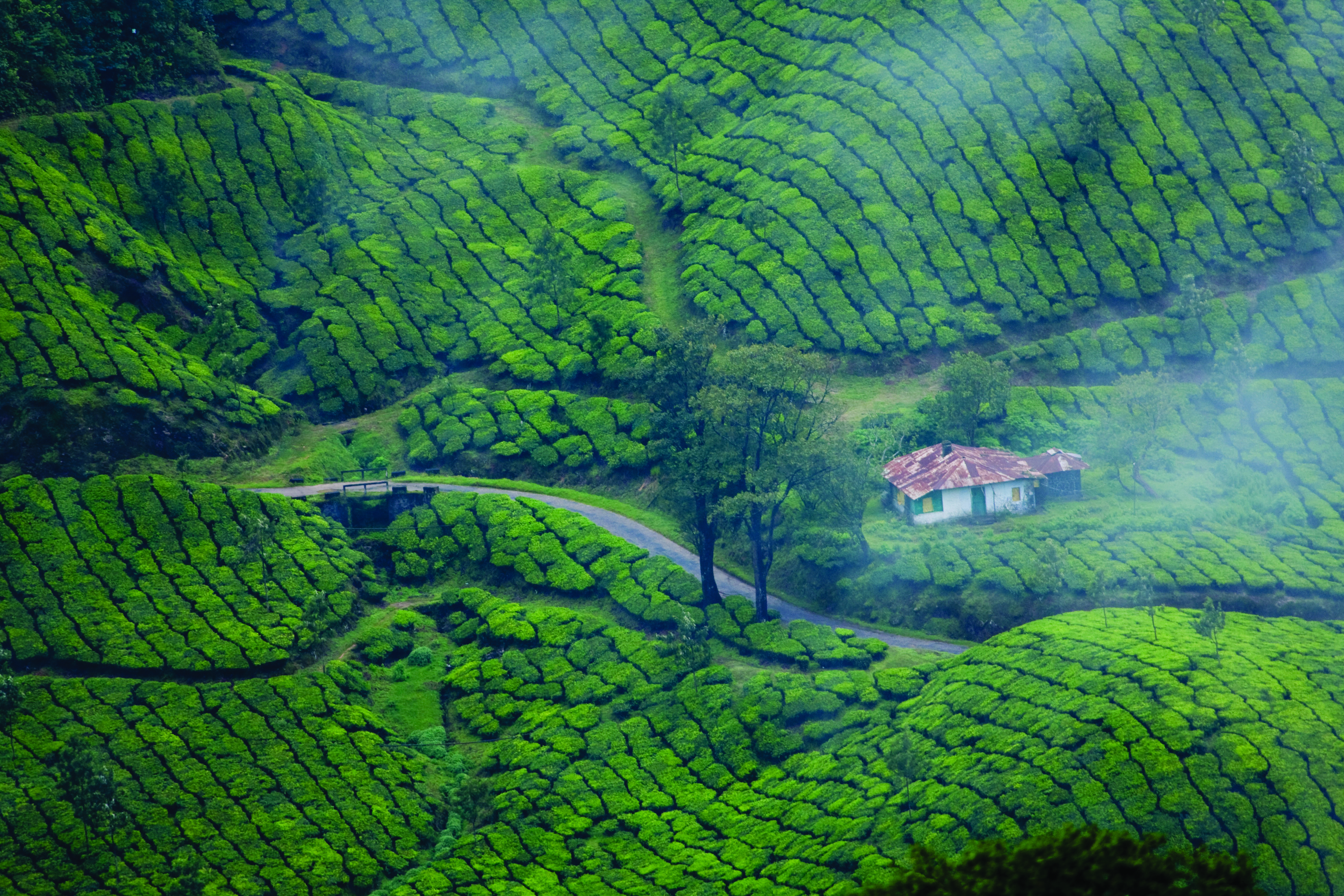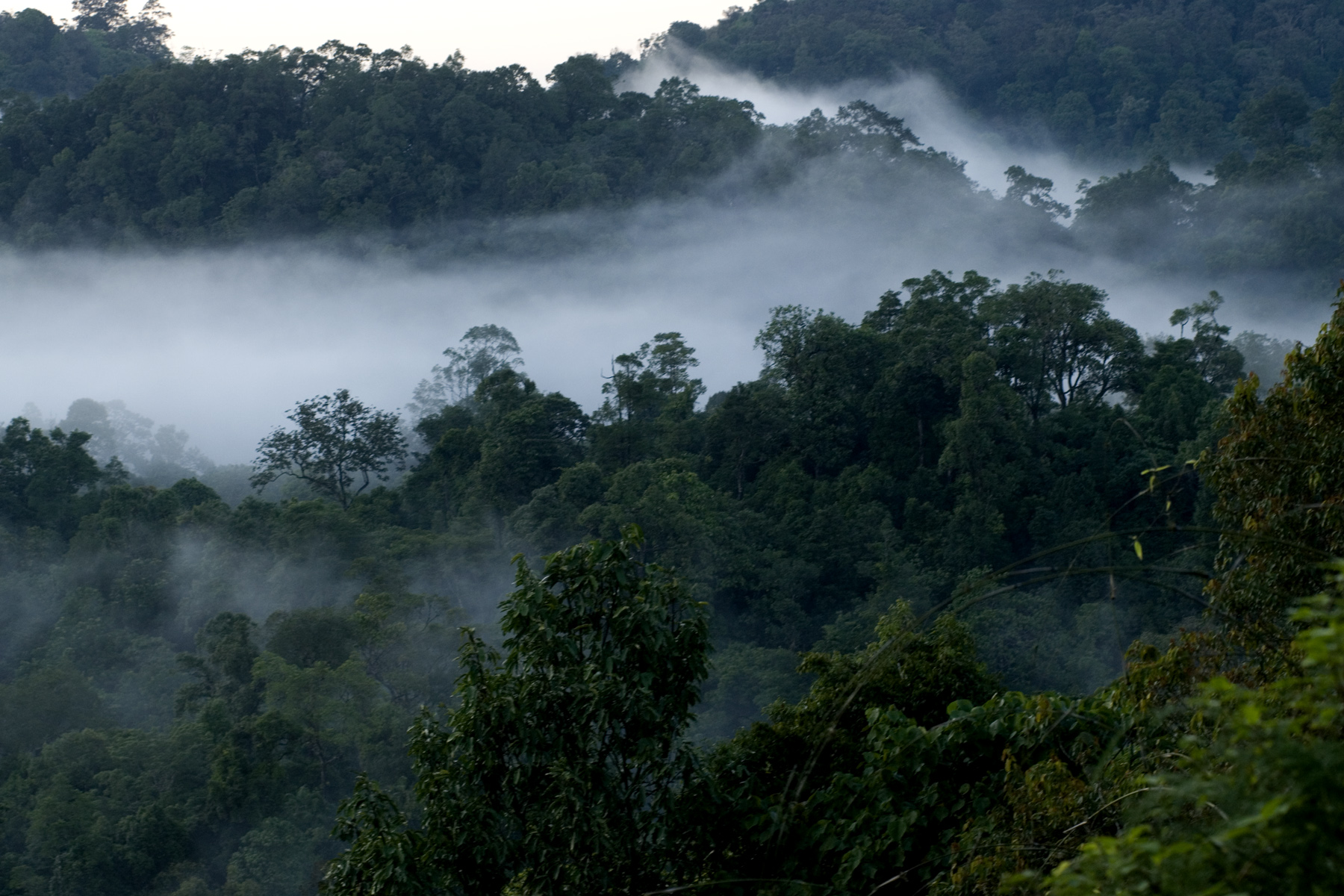Welcome to Kerala Nature Vibes
Kerala’s Hill Stations: Your Definitive Guide to God's Own Country's Misty Peaks and Nature Vibes

Meesappulimala – The Second Highest Peak of the Western Ghats
Courtesy: Department of Tourism, Government of Kerala
The Essence of the Western Ghats – A Land Forged in Mist and Spice
Kerala, often celebrated globally for its tranquil backwaters and pristine Arabian coastline, reveals its profound heart along the rugged expanse of the Western Ghats. This monumental mountain range forms the geographical and biological spine of "God's Own Country," presenting a landscape drastically different from the coastal lowlands. Here, the air is temperate and cool, the slopes are carpeted in lush rainforests, and the terrain is rich with endemic biodiversity 1. This highland region, rising to elevations around 1,600 meters and beyond, is historically crucial, rooted deeply in the global trade of spices and tea 2, lending a unique cultural and agricultural heritage to the experience 3.
The appeal of Kerala’s hill stations transcends mere sightseeing. It caters specifically to the discerning "nature vibes" traveler—an audience that seeks tranquil, authentic, and emotionally resonant experiences over fleeting tourism 4. These visitors value the fresh mountain air, the panoramic vistas of spice gardens, and the opportunity for deep cultural engagement. Destinations like Munnar, Wayanad, and Vagamon offer a vital escape from the crowds and heat, emphasizing a relaxed pace and profound connection with the lush environment 5.
Kerala’s Sustainable Tourism Edge: The Responsible Model
Kerala has emerged as a global frontrunner in sustainable tourism, successfully balancing the necessity of nature conservation with inclusive development for local communities 6. The state’s commitment to eco-friendly travel ensures that visitors can explore the wealth of its hill stations without negatively affecting the environmental integrity of the region. This responsible approach is highly appealing to eco-conscious tourists whose travel choices mirror their personal values 7.
A distinguishing feature of Kerala’s ecotourism framework is the active role played by the local populace. The ecotourism centers, including those found in the forested hill regions, are frequently managed and staffed by forest-dependent and indigenous tribal communities 8. By choosing to visit these official ecotourism destinations, the traveler’s expenditure directly contributes to the welfare and economic stability of these communities. This structure transforms the visitor from a passive tourist into an active, responsible participant in the regional conservation effort 9.
The period immediately following the monsoon season presents a unique window of opportunity for travelers. While the peak season occurs during the cool, dry winter months (October through February), opting for a visit in September offers exceptionally favorable conditions. During this “Emerald Window,” the landscape is exquisitely lush and vibrant due to the recent rains, making it perfect for hiking and photography 10. Yet tourist crowds have not yet reached their peak density. This timing allows for a superior “nature vibes” experience, distinguishing the journey from typical peak season travel.
Furthermore, the mild climate of the hill stations provides a secondary value proposition tied to wellness. Kerala is already recognized globally as a hub for holistic health, offering extensive yoga and Ayurveda treatments 11. Since the hill stations provide a cool, refreshing atmosphere that contrasts sharply with the humid coastal areas during the hotter months (March to May), they are the preferred location for those seeking rest and rejuvenation. This is particularly relevant during the traditional Karkidakam period (mid-July to mid-August), regarded as a spiritual time ideal for intensive Ayurveda therapies 12. By linking the hills to health retreats, the travel experience attracts a demographic seeking deeper, restorative value.
Table 1: Key Data Snapshot of Kerala's Top Hill Stations

Neelakurinji – The Once-in-12-Year Bloom of Munnar Hills
Courtesy: Department of Tourism, Government of Kerala
| Hill Station | Primary USP | Altitude (Approx.) | Unique Experience | Best For |
|---|---|---|---|---|
| Munnar | Tea Plantations, Neelakurinji Bloom | 1,600 m (5,200 ft)13 | Trekking Meesapulimala (Moderate/Challenging)14 | Honeymooners, Serious Trekkers |
| Wayanad | Mist-Clad Mountains, Coffee Estates | 700 - 2,100 m | Exploring Edakkal Caves, Coffee Plantation Stays15 | Nature Lovers, Families |
| Vagamon | Rolling Meadows, Pine Forests | 1,100 m | Paragliding and Mountain Biking16 | Adventure Seekers, Tranquil Getaways |
| Thekkady | Periyar Wildlife Sanctuary | 900 m | Periyar Lake Boat Cruise, Spice Plantation Tours17 | Wildlife Enthusiasts, Spice Aficionados |
| Ponmudi | 23 Hairpin Bends, Golden Peak | 1,100 m | Panoramic Views, Easy Road Trip from Trivandrum18 | Road Trippers, Weekend Escapes |
| Gavi | Pristine Eco-Tourism | 1,000 m | Tribal-led Jeep Safaris, Birdwatching (260+ species)19 | Eco-Conscious Travelers, Birdwatchers |
Section IV: Cultural Footprints and Authentic Highlands Life
Marayoor: Sandalwood Secrets and Megalithic Mysteries
Marayoor, located near Munnar, holds a unique distinction as the only place in Kerala that hosts natural sandalwood forests, housing approximately 65,000 aromatic trees 36. Visitors can explore the Sandalwood Regeneration Experimental Plot and the Forest Department’s processing factory to learn about the sustainable preservation of this valuable species 36.
The GI Tagged Treasure: Marayoor Jaggery (Sharkara)
Marayoor is equally famous for its exceptional molasses, known as Marayoor Sharkara or “Marayoor Gold Jaggery,” which received a Geographical Indication (GI) tag in 2019 37. This jaggery is prized for its dark color, medium hardness, and traditional hand-molded finish 39. Its superior quality results from sugarcane cultivated in the region’s mineral-rich soil, achieving an impressive 97% sucrose content 38.
The labor-intensive, manual production process is maintained by local Muthuva farmers, ensuring purity, low sodium, and high iron content 40. The jaggery’s use extends beyond cuisine—it plays a central role in Ayurveda formulations, temple offerings, and traditional delicacies such as sharkaraperatti served during the grand Sadya feast 39.
Muniyara Dolmens: Echoes of the Neolithic Age
Marayoor is also home to the Muniyara Dolmens—2,000-year-old megalithic burial chambers built using massive stone slabs (dolmenoid cists), dating back to the Neolithic period 38. These structures attract archaeologists and history enthusiasts alike, offering a glimpse into early human settlement and burial practices. Complementing this is the site of Ezhuthupara, located within the Marayoor forest, which features prehistoric rock paintings depicting human and animal figures 43.
Connecting the terrain of Marayoor to its ancient human stories deepens the traveler’s appreciation, transforming a scenic visit into an anthropological exploration.
The Flavor of the Hills: Culinary Delights Beyond the Coast
Kerala’s cuisine is celebrated for its diverse flavors and extensive use of coconut, spices, and local produce 44. The highlands, however, offer a unique twist. Hill kitchens incorporate fresh tea, coffee, cardamom, pepper, and ginger harvested locally, infusing meals with aromatic warmth.
Common dishes include Appam with Ishtu (a soft pancake paired with creamy stew) and Puttu and Kadala Curry (steamed rice flour cylinders with black chickpea curry) 46. Spices like cardamom and ginger dominate local tea culture, while vegetarian feasts such as the traditional Sadya—served on a banana leaf with up to 28 dishes—represent Kerala’s culinary pinnacle 47. Desserts often feature Payasam, the sweet, milk-based pudding cherished across the state 44.
Section V: Planning Your Kerala Nature Escape – Logistics and Timing
Strategic planning is essential for maximizing your experience in Kerala’s Western Ghats. Understanding the regional climate, travel logistics, and connectivity helps ensure a smooth and rewarding journey. From booking reliable flights to arranging guided tours, using trusted travel partners such as Trip.com or Cheapoair can simplify your planning and often offer great deals on Kerala itineraries.
Optimal Seasons for Hill Station Travel
The temperate climate of Kerala’s hill regions makes them a year-round destination, but certain seasons offer distinctive advantages:
- The Winter Peak (October – February): Widely considered the best time to visit. Cool and pleasant weather ranging from 10°C to 30°C makes it perfect for trekking, sightseeing, and wildlife safaris. For travelers arriving by air, use Aviasales or Wayaway to find budget-friendly flight options.
- The Emerald Monsoon Window (September): September, immediately after the monsoon season, offers lush greenery, full waterfalls, and crystal-clear skies. This is the perfect time for photography and eco-travel. In case of flight delays or cancellations during the monsoon, AirHelp and Compensair can assist with compensation claims and travel protection.
- Summer Escape (March – May): While coastal Kerala can be hot and humid, the elevated regions of Munnar, Thekkady, and Vagamon remain cool and misty. Many travelers combine their summer trip with a 5-day guided package such as Viator’s Kerala Highlands Tour, which includes houseboat stays and scenic drives through the Ghats.
Accessibility Guide: How to Reach the Highlands Strategically

Munnar – Kerala’s Crown Jewel of Hill Stations
Courtesy: Department of Tourism, Government of Kerala
Most Kerala hill stations require short but scenic road travel through winding ghat roads. Cochin International Airport (COK) serves as the key hub for travelers heading to Munnar and Vagamon, while Calicut (CCJ) and Trivandrum (TRV) provide convenient access to Wayanad and Ponmudi respectively. For first-time visitors, checking transport reviews on TripAdvisor ensures trustworthy local transfers and authentic experiences.
| Destination | Nearest Major Airport (IATA) | Nearest Major Railway Station | Approx. Road Time from Nearest Airport |
|---|---|---|---|
| Munnar | Kochi (COK) | Aluva / Ernakulam | 3 – 3.5 hours (101–125 km) |
| Wayanad | Calicut (CCJ) | Kozhikode | 2 – 3 hours (65–110 km) |
| Thekkady | Madurai (IXM) / Kochi (COK) | Kottayam (KTYM) | 3.5 – 4 hours (136 km from Madurai) |
| Ponmudi | Trivandrum (TRV) | Thiruvananthapuram Central | 1.5 – 2 hours (55 km) |
A key travel insight is that for Thekkady (Periyar Wildlife Sanctuary), the closest international airport is actually Madurai (IXM) in Tamil Nadu, making it a more efficient gateway than Kochi in certain itineraries. Wayanad, by contrast, is conveniently accessed via Calicut airport (CCJ). Those planning road trips can compare flight and taxi combinations easily on Trip.com or Wayaway.
Duration and Itinerary Planning (5-Day Focus)
A well-balanced Kerala itinerary ideally spans at least five days, allowing travelers to explore two to three hill stations alongside cultural or wildlife experiences. The most efficient route for first-timers is the Central Kerala cluster: Kochi → Munnar → Thekkady or Vagamon. For this route, Cheapoair and Aviasales provide competitive multi-city flight bookings, while Trip.com simplifies local accommodation and transfers.
Budget-conscious travelers may prefer the off-season window (June to September), which offers both environmental charm and reduced travel costs. Using AirHelp or Compensair ensures you remain protected against flight delays while benefiting from monsoon discounts. Local connectivity is well-managed through KSRTC buses and shared taxis frequently departing from Kochi and Kottayam.
✈️ Plan your Kerala highlands adventure today with trusted partners like Trip.com, Wayaway, and Viator for curated itineraries, scenic flights, and authentic guided tours.
Section VI: Conclusion – The Future of Kerala Hill Tourism
Kerala’s hill stations represent much more than picturesque landscapes—they are living ecosystems that interweave environmental conservation, community livelihoods, and heritage continuity. As travelers seek experiences that are sustainable, authentic, and culturally rooted, the highlands of Kerala are poised to emerge as the future heart of responsible tourism in South India.

Nelliyampathy – The Hidden Gem of Palakkad’s Highlands
Courtesy: Department of Tourism, Government of Kerala
The fusion of traditional wisdom with modern eco-management practices—as seen in destinations like Gavi, Marayoor, and Nelliyampathy—demonstrates how tourism can sustain both ecology and economy. With improved digital connectivity and growing eco-awareness, more travelers are exploring lesser-known hill trails, wildlife sanctuaries, and tribal hamlets with an ethical mindset that values preservation over consumption.
To make the most of this transformation, visitors can plan their journeys using dependable platforms that align convenience with conscious travel. Start by comparing flight prices on Aviasales or Wayaway, then secure stays and transfers through Trip.com. For guided cultural and nature tours, Viator’s Kerala itineraries offer immersive, well-curated experiences. Checking authentic reviews via TripAdvisor further helps identify ethical operators and offbeat local stays.
Travelers can also ensure peace of mind by using AirHelp or Compensair to claim compensation in case of flight disruptions, a vital safeguard for those traversing Kerala’s monsoon-influenced regions. With every well-planned, respectful visit, travelers contribute directly to sustaining Kerala’s delicate mountain ecosystems and the communities that call them home.
🌿 Experience Kerala’s hill heritage responsibly — book your flights with Aviasales, plan accommodations on Trip.com, and explore authentic tours through Viator — your gateway to the real Western Ghats.
References & Further Reading
- Kerala Tourism Department. Official Hill Station Tourism Portal . Government of Kerala.
- Western Ghats Ecology Expert Panel (2011). Report of the Western Ghats Ecology Expert Panel. Ministry of Environment and Forests, Government of India. moef.gov.in
- Harilal, K. N., & T. M. Thomas Isaac (2003). Kerala: The Development Experience – Reflections on Sustainability and Replicability. London: Zed Books.
- Kurup, K. K. N. (2008). History of the Western Coast of India. New Delhi: Northern Book Centre.
- Nair, C. K. Ramachandran (2016). Ecotourism Planning and Sustainable Development in Kerala. Thiruvananthapuram: Centre for Development Studies.
- UNESCO World Heritage Centre. Western Ghats – World Heritage Site Description .
- World Travel & Tourism Council (2023). Economic Impact Report – India. wttc.org
- Lonely Planet India. Travel Guide: Kerala .
- Kerala Forest and Wildlife Department. Official Website – Protected Areas & Ecotourism Projects .
- Kumar, S. R. (2021). “Community-Based Tourism in the Western Ghats: Challenges and Possibilities.” South Asian Journal of Tourism and Heritage, Vol. 14(1), pp. 75–88.
- The Hindu (Travel Section). Travel Features on Kerala Hill Destinations .
- India Tourism Statistics (2024). Ministry of Tourism, Government of India. tourism.gov.in
For authentic data and planning insights, always cross-reference government and academic sources alongside responsible travel guides.